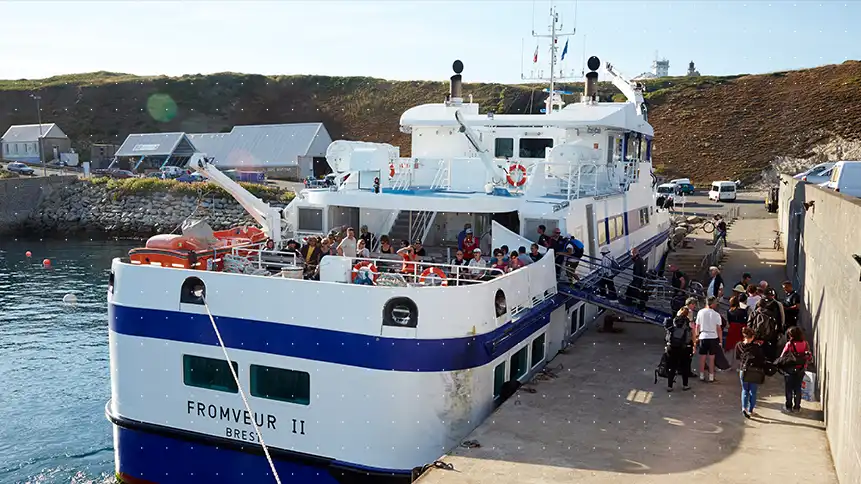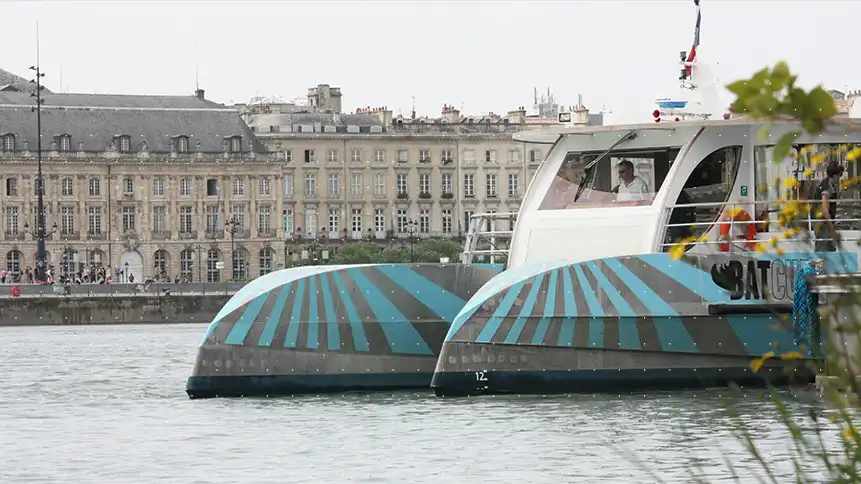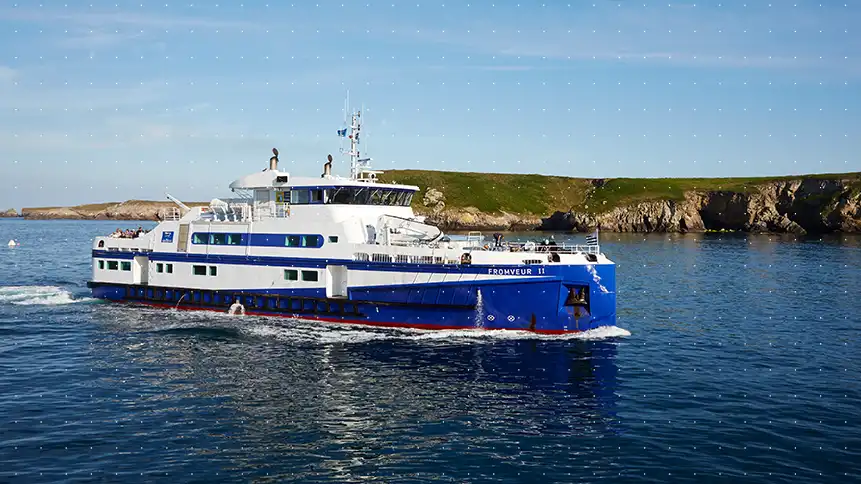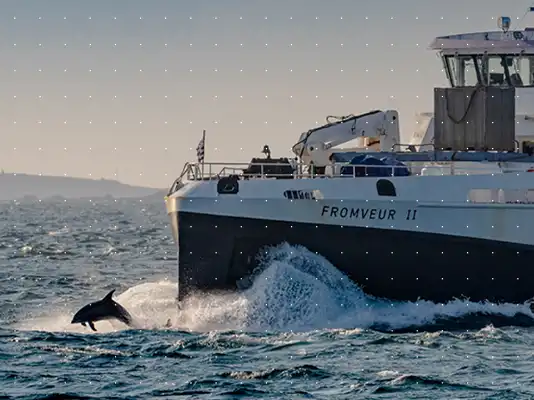To cater to the specific circumstances of some communities, Keolis operates river and maritime transport services for passengers. The Group pursues this activity with the same commitment to operational excellence as with any other transport mode.
River and maritime transport: bespoke mobility solutions for communities
Meeting the specific needs of communities
For almost 40 years, Keolis has been transporting passengers on boats. The Keolis Group currently operates four such services in France and Australia: in Finistère (Penn Ar Bed Maritime Company), Bordeaux (Bat3), and Newcastle (Australia). Keolis’ river and sea services bring a solution customised to the specificities of each region: island shuttles, rivers running through a conurbation, peninsulas, ports, etc. By building connections between coastal zones and across rivers, Keolis’ boats improve access to urban and rural zones, and support local economic development. In summertime, ships contribute to tourist appeal by carrying holidaymakers from shore to shore.
A transport mode integrated into the network
River and maritime transport services are integrated into local mobility networks through multimodal interchanges and common timetable, ticketing and fare policies.
Maritime and river transport: serving the population 365 days a year
The river and sea shuttles operated by Keolis contribute to the liveability of local communities. All year round, since 1992, the boats of the Penn Ar Bed Maritime Company have been making life easier for the inhabitants of the Molène, Sein and Ouessant islands in Brittany. Whenever sailing conditions allow, the ships run daily services to and from the mainland (Brest, Le Conquet, Audierne, etc.) and between the islands, as well as transporting goods and foodstuffs. In Newcastle and Bordeaux, river and sea shuttles avoid long overland journeys by linking two banks of a river or a sea inlet and serving multimodal interchange hubs, from where passengers can take other transport modes.
Simpler and safer sea trips
Safety onboard: an absolute priority
Keolis applies strict safety standards to its river and sea transport services, in line with the most stringent international regulations. Each vessel is equipped with the latest safety technology, including advanced navigational systems and easy-to-access life-saving equipment. The crews, made up of skilled and experienced seafarers, receive in-depth training in emergency procedures and safety practices, ensuring maximum responsiveness in the event of an incident.
Innovating for travel made easy
Welcoming passengers aboard, comfort, ticketing and booking, adherence to timetables, accessibility for people with reduced mobility: Keolis attaches the same importance to the passenger experience whatever the mode of transport: sea, river or land. The Group employs advanced technology to provide a seamless and reliable service to passengers: electronic ticketing, online booking, real time information, etc. In Newcastle, for example, ferry passengers can use contactless payment to buy their tickets on board, using their smartphone or bank card. Similarly, the Compagnie Maritime the BreizhGo Penn Ar Bed maritime company offers paperless boarding passes for sale on its website, as well as the possibility of buying them at ferry terminals.

More sustainable mobility with maritime and river transport
Used in an urban environment, Keolis’ river and maritime transport services help reduce congestion. These crossings provide an alternative means of opening up areas underserved by conventional transport modes. The Group also favours the use of low emission boats to limit their environmental impact. It operates two catamarans in Bordeaux with hybrid electric propulsion and low emissions, for its Bat3 service (250,000 passengers per year).


The BreizhGo Penn Ar Bed Maritime Company in figures
- 5passenger ships including 3 combined freight/passenger vessels
- 1freight ship
- 104seafarers and employees
- 7ferry terminals
- 370,000passengers
- 14,000tonnes of goods per year
